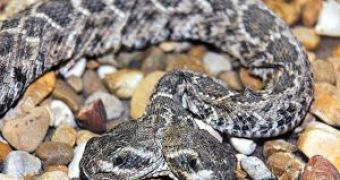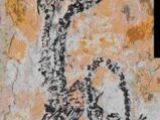Sometimes, mutation, contamination or improper incubating conditions produce two-headed snakes or lizards, real natural curiosities.
About 400 cases of two-headed snakes have been recorded in historic times. But now, archaeologists have found the first example of a two-headed reptile in the fossil record.
The abnormal animal, belonging to choristodera order, a group of aquatic reptiles far related to crocodiles and having a long neck, was unearthed in the Early Cretaceous (during the Dinosaur era) Yixian rock formation in northeastern China.
The tiny skeleton of the hatchling has two heads and two necks, fused at their base. The 120-million-year-old specimen is the oldest example this developmental anomaly, named axial bifurcation. This type of malformation has been seen before in snakes, crocodiles, lizards and turtles - some of which have survived for several years in captivity.
"To my knowledge, it is the only record of a vertebrate fossil showing that kind of malformation," said Dr Buffetaut. "Living animals like this are known. But if you compare the number of reptiles born with two heads with the total number of reptiles born, it is very small."
"So the chances of finding a fossil like this are extremely low."
"Judging from the extreme juvenility of the fossilised skeleton - its proportionally large head and eye orbits - the tiny creature did not survive for long," says its finder, Eric Buffetaut, director of research at National Centre for Scientific Research in Paris, France. "The specimen reveals that it must have been very young when it died and became fossilised."
Adult choristodera could reach 1,5 metre (5 feet) in length (as big as a medium sized monitor lizard), although the neonate found was just 70 millimetres long.
Choristoderans seem to have been common aquatic reptiles during the Cretaceous Period and even survived after the Dinosaur extinction (65 million years ago) 40 million years more, till 25 million years ago.
The two headed fossil is now held at the Shenzhen Museum in southern China.

 14 DAY TRIAL //
14 DAY TRIAL // 
